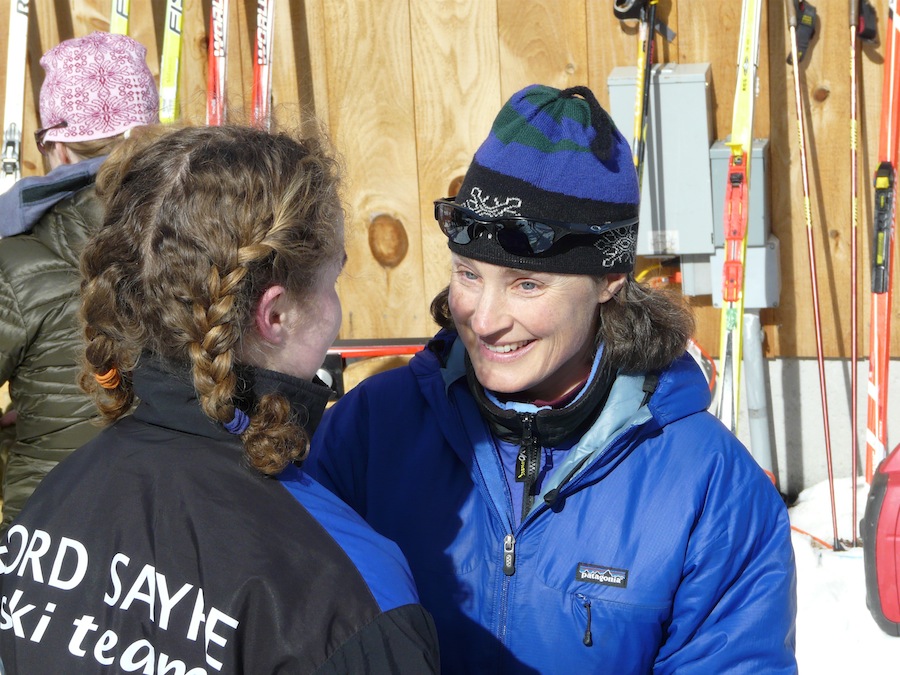
Editor’s note: This is the third installment in a four-part series on female nordic coaches in the U.S. In Part I, two-time Olympic U.S. skier Nancy Fiddler introduced herself, Part II took a look at several influential female collegiate coaches, and Part III delves into female coaching in the junior pipeline. Part IV will explore women leading grassroots efforts across the country.
***
America! Land of the free, home of many sports! As a parent, I know all about the athletic choices kids have; my daughter cross-country and alpine skied, played soccer, did ballet, Irish danced, and rode horses for many years. Life is crazy busy for most American kids and the parents who shuttle them around.
I am going to go out on a limb here and say that most of the successful cross-country skiers in the U.S. come from a multi-sport background. I went through high school playing varsity field hockey and lacrosse and was a diver on the swim team. I never trained during the summer for any of my sports, working instead at a summer camp teaching swimming and canoeing.
I went to college and played hockey and lacrosse, but graduated with a Bachelor’s degree and a passion for skiing. How did I end up learning to ski and race in college? At the time, there was no pool at Bates, and the nordic team was recruiting, so I gave it a try. Yes, I gained a high degree of athleticism doing other sports, and this helped me in my skiing, but this is not the U.S. Ski and Snowboard Association’s recommended pipeline!
The scenario is different today. Yes, kids are still involved in multiple sports at a young age, but collegiate and elite skiers ultimately picked nordic at some point out of a vast menu of fun athletic endeavors. Focusing on one sport means giving another sport a lesser role or dropping it entirely. These decisions can be agonizing.
Successful nordic skiers typically begin to focus on skiing around age 15 or 16. By then, ski training requires a significant amount of time and energy for teenagers. The sport becomes year-round and is increasingly specific. Many good cross-country skiers also excel at other sports, but end up skiing because it is fun and their friends do it. They choose to do ridiculously hard workouts in all kinds of weather because they love the sport and the culture attached to it.
Part III of this series takes a look at female coaches who work with U18 and U16 athletes, the kids who are in the process of choosing cross-country skiing over other sports. These coaches are involved with juniors at a critical point in their development. Much happens during this time: technique refinement, conditioning, coordination during growth spurts, more frequent racing, equipment acquisition and maintenance, and more. Skiing takes on a new level of commitment for these kids.
It becomes part of a coach’s job to lead kids to skiing and help them love it and choose to pursue it. Ten female club level coaches weighed in via an email survey about their coaching careers. These dedicated women are part of the team who make skiing attractive, fun, and rewarding for junior skiers around the country.
Female Coaches: Roots of Community and Family
Go to the Olympics or to a World Cup race and take a look at the athlete-support system. Every team has a swarm of coaches and service staff to meet the athletes’ every need. With few exceptions, coaching at the international level in cross-country skiing is a male-dominated field.
Are female coaches coaching closer to home by choice?
“I see myself right where I am: working in a community-based program to share the sport and prepare athletes to take it to any level they choose – whether it be local, regional, national, or international,” wrote Scottie Eliasson, who coaches the Ford Sayre Nordic Club in Hanover, N.H.
Community-based programs, whether they are clubs or school teams, are the backbone of nordic skiing in the US. Eliasson has committed 21 years to coaching at Ford Sayre, a program with more than 100 athletes and 30 coaches.
Club programs are attractive to female coaches on many levels. For starters, it’s a foot in the door of coaching. Ashley McQueen, who skied as a junior in the Sun Valley Ski Education Foundation, explained that her coaches and nordic skiing in general “had a huge impact on how I grew up. I really wanted to have an influence like that. Rick [Kapala] offered me a coaching job as a way for me to get in my training and to make some money over the summers, and I really enjoyed it. When he called to offer me a position on the staff, I jumped at the opportunity.”
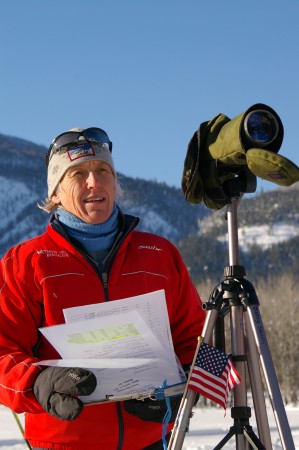
Lots of coaches who double as moms don’t want to travel outside the U.S. while their kids are young.
The Methow Valley Nordic Team in Winthrop, Wash., has a stronghold of female coaches. Leslie Hall, Laura McCabe and Betsy Smith have been holding down the fort in the Methow Valley for nearly two decades. All three women are moms with children who are or have been involved in the program. Being able to coach in the program her own two kids are in is important to Hall, who sees her job as Mom as top priority.
A three-time Olympian who competed in as many Junior World Championships and five World Championships, Hall explained she never had any goals to coach at the international level.
“I will coach locally on some level until my kids are out of high school, so probably another 7 years or so,” she wrote of her coaching plan. “I hope to coach at Junior Nationals and to do my best to inspire lots of kids to commit to skiing.”
Susan “Poppet” Boswell has been coaching skiing for 19 years and found her dream job at Stratton Mountain School [SMS] in Vermont. After two years of working with the U16 skiers, she now holds a position as a Winter Term Coach working with U14 athletes. She likes this arrangement, as it allows her more time at home with her family. Boswell’s 14-year-old son will start his first year at SMS this fall.
Many female coaches have careers outside of skiing. Club programs offer flexibility and the opportunity to work with kids in the outdoors, which appeals to some women who work “regular jobs.”
Smith juggles a career as a veterinarian and sheep rancher with her biathlon coaching. Eliasson works full time at the medical school at Dartmouth.
Margaret Maher, who heads the New York Ski Educational Foundation nordic program in Lake Placid, N.Y., works per-diem at Adirondack Medical Center as an exercise specialist and is also in nursing school. Alison Deines-Sehnert, who recently stepped down from her position as nordic director of the Jackson Hole Ski Club, worked as a bookkeeper, a caretaker, and office coordinator for a heli-ski operation. Boswell owns a company that does computer mapping.
U.S. Ski and Snowboard Association [USSA] Nordic Program Director Joey Caterinichio has come through the entire system of nordic skiing in the US. As an athlete, she made five trips to Junior Nationals and races at three NCAA Championships. She started coaching high-school skiers and went on to form Alaska Nordic Racing in Anchorage with her husband. She coached there and through 17 Junior Nationals until moving to her present position with USSA last year. Caterinichio has three children under 10, and all the years she was coaching, she also worked in medical sales.
Although female coaches may not be front and center on the international stage, they are in the wings, behind the curtains and working for the team in school and club programs around the country.
Eliasson sees it like this: “I feel that I am directly making a difference locally and regionally. Indirectly, I see our club as an integral part of the strengthening club network that is helping make a difference nationally and in the US’s international results.”
Boswell feels she is part of the big picture of skiing in the U.S. “I’m a small person, and I work with small kids, but I have a high level of experience and education that I bring to my skiers, who in turn bring it to the table and raise the bar for everyone,” she wrote.
Club Programs: The Infrastructure of U.S. Skiing and a Good Place to Grow Up
“Sports keep kids out of trouble, pushes them to be disciplined and healthy while tackling dreams that they only have a short time to achieve. Everybody should do sports. I don’t care which one. Skiing of course is my favorite but kids need to be involved and active.” — Caterinichio
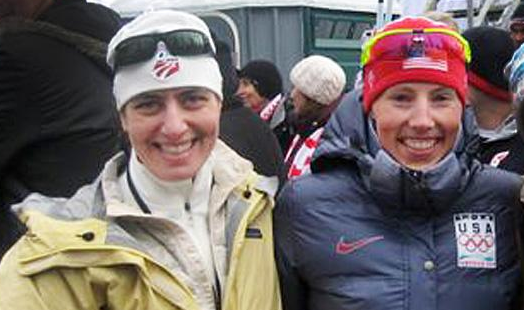
Nordic clubs are growing around the country and are staffed by legions of full and part-time male and female coaches. Most clubs offer ski programs for juniors from 7 years and up and often engage entire families.
Coaches who work with the U16 and U18 age groups are spending quality time with athletes in the process of growing up. Coaches become role models and mentors for the teenagers they work with and thus, very important figures in their lives. Strong relationships are created on the ski trails and in the wax rooms.
“I love the relationships with the athletes,” McQueen wrote. “I get to work with such great individuals and watch them grow from little 13/14 year old kids into strong and confident adults.”
Deines-Sehnert enjoys working with kids and helping them achieve “not results, but their inner goals,” she wrote. “Watching kids stand up straighter because they are proud of their accomplishments – that’s what I love.”
The role of a club coach is a fine balance of taskmaster and nurturer. Cross-country ski racing is one of the toughest sports out there. How do coaches keep kids from quitting when the pain is too much to bear, the results too disappointing, or their will to do the same drill one more time is gone?
After five years on the SVSEF Gold Team, Nicole De Yong has been coaching Sun Valley juniors for a year. She has quickly figured out that having a good rapport with the athletes is essential to gaining their trust. “Playing, joking, having fun from a friendship standpoint is as important as having the ability to get down to business when necessary,” she said.
Ski racing boils down to complete commitment and the ability to take risks. None of this is possible without trust; trust in your preparation, trust in your equipment, and trust in the coaches who lead you. Skiing at the highest level requires these elements and belief in oneself and their coaching system. Fostering this confidence is part of a coach’s job and far exceeds the teaching of technique and the waxing of skis.
Skiers entering the U20 bracket are often leaving home for the first time to either go to college or to pursue their skiing goals in a new setting. This is the time when nordic athletes make the decision to continue in the sport or to follow a new life path. The time spent training and racing during their high school years has prepared them for anything.
According to Eliasson, the foundation of success in sports or anything in life boil down to “resilience, adaptability, independence, responsibility, and the capacity to prioritize competing demands,” she wrote. “Many of our athletes continue on to college ski teams, and feedback from the athletes and from their college coaches indicates that they are well-prepared for the demands placed on student-athletes. We hear from parents and athletes many years later that experiences in Ford Sayre have a lasting positive impact.”
Sharing the Dream
“My job is a lot more than just coaching, as I deal with all the bureaucratic stuff and organizing everything. My favorite part is the one on one interaction with the skiers and helping them to find the excitement and passion of committing to a great sport.” — Leslie Hall, Methow Valley nordic program director
The qualifications required to coach skiing might include the USSA Level 100 certification, waxing knowledge, basic physiology, and an understanding of skate and classic techniques. These identifiable skills are important, but the essential qualification is not easily measured and not always readily apparent. Every good ski coach has it. Passion does not come from a clinic or a book on ski training.
Many nordic coaches are deeply connected to the sport by means of personal experience. That does not mean that anyone who has ski raced is automatically a great coach; technical and waxing expertise can be acquired through education and practice, but the ability to channel passion and to communicate it to others is a gift.

Everyone gets involved with ski coaching in different ways. Maher grew up cross-country skiing and coaching is her way of sharing her love of the sport.
“Since high school, I knew at some point I would want to coach,” she wrote. “My dad, mom, and grandmother were all PE/health teachers: I guess athletic teaching is in my blood. I certainly wasn’t ready to leave the sport after college … but I was not ready to be a full-time ski racer. Coaching was the next natural step.”
An eight-time Vermont state champion and two-time Junior Nationals winner, Maher turned her experiences she as a junior and in college (she made two USSA J1 Scando Cup Teams and raced four years in college) into a successful coaching career.
Maher started skiing with the Mountain Top Bill Koch Club in Chittenden, Vt.,, which she called “family oriented.” She feels fortunate to have been coached by Mike Gallagher at Rutland High School and also credited her college coach at the University of New Hampshire, Cory Schwartz.
An assistant coach at Sun Valley, McQueen uses her personal experience to reach out to juniors in the program she grew up with. “I was shy as a kid, and I think that going through the process of overcoming my shyness and insecurities helps me se how fear and insecurity affects some of the athletes I work with,” she wrote.
Another accomplished junior and world-class nordic athlete, Hall also cites her mentors as contributing to her passion for skiing and coaching. “I have been influenced my whole life by so many great coaches,” she explained. “Of course, Torbjorn Karlsen probably had the biggest role, and also Martha Rockwell. Laura McCabe encouraged me to be involved and I have drawn from [sister] Cami’s experiences at Dartmouth.”
Some coaches have stumbled into their passion for coaching. Such is the case with Caterinichio, who was returning from college and skiing on her own when she got “the call.” She volunteered at Chugiak High School, where her younger brother Gus and sister Nina were on the team.
“When all the coaches quit the program I was left with a team of 50 athletes. I took over the team and never stopped coaching,” she explained. Caterinichio ran with her opportunity, literally all the way to the USSA Nordic Program Director job. On the way, she doubled the size of the high school program, which eventually became Alaska Nordic Racing.
Not all respected coaches come straight out of long ski careers beginning with the Bill Koch league or have ever raced on the World Cup circuit. A diverse background can lend itself well to coaching – case in point, Janice Sibilia, competitive programs director for New England Nordic Ski Association. Sibilia has a competitive background in several sports. She was an equestrian and national-level cyclist and didn’t get into skiing until she began cross training for cycling.
An injury brought Sibilia to ski coaching. “During my downtime from racing a local high school asked me to help out,” she explained. “It was a big group of over 50 high school skiers and a lot of fun. I learned a lot (being an athlete is very different than coaching!) and was grateful for the opportunity. It really sparked my interest in coaching and since then I have worked really hard to improve my coaching skills and knowledge.”
Sibilia became a student of nordic skiing by going to every clinic she could find. She shadowed other coaches at camps and training sessions and cites the USSA L100 certification as an important building block in her education. Besides drawing on her background as a cyclist, Sibilia has learned invaluable lessons about communication from a favorite equestrian clinician. She says, “I think you can learn things in places you least expect it.”

Eliasson got started in her coaching career by volunteering to help with the local Bill Koch League (BKL) program “to share the sport with others.” Eliasson was a BKL participant herself, and continued racing through college. Like Sibilia, Eliasson has drawn from other sports, such as rowing, to develop her coaching style.
“My experiences coxing girls in high school and men in college helped shape who I am as a coach today,” Eliasson wrote. “My high school crew coaches remain some of my most important coaching mentors.”
The biathlon head coach at Methow Valley, Smith started as an alpine skier and racer, then jumped into nordic coaching.
“When our son was 9 years old we wanted to keep him [cross-country] skiing so we started a biathlon program to complement our local nordic team and I have been coaching that now for 11 years,” she explained. “I hope to be a great junior coach. I hope to develop a biathlon program here that is a model for other Nordic programs in the US on how to incorporate biathlon into their xc teams.”
It’s All About Balance
“I wish there was at least one female coach on the US [Ski] Team because I think it would actually help all the coaches. Women bring a whole different set of strengths and perspectives to the table and I think that would help both the coaches and the athletes. I guess I’d say women are not on par (with men), but I think they are getting there. It will take time.” — Boswell
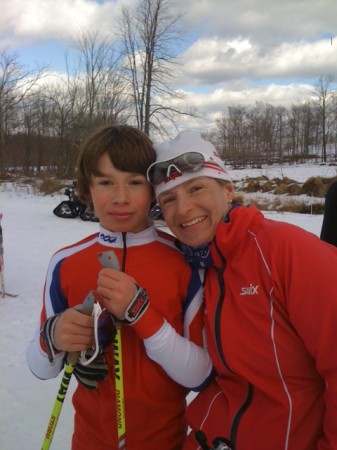
Co-ed coaching can be especially challenging, as boys and girls bring different personalities, quirks, and styles to any ski program. Each gender has its own special needs and methods during a group workout, before a race, and just messing around after practice. Coaches see this and work to take care of everyone and to create team balance.
In coaching, men and women generate different kinds of energy as well. “Gosh, the two male coaches I work with would be bored out of their skulls if it was just the two of them working together as guys,” Boswell wrote. “Life is so much more fun with a mix of sexes bringing different ideas and styles to the table.”
She pointed out that balance on the coaching staff is necessary to effectively deal with both genders. For example, a female coach can be helpful when a specific “girly” question or situation comes up. Often, girls feel more comfortable confiding in a female mentor.
There are times when male coaches can’t do what females can. For instance, a 200-pound male coach may not be the best kick-wax tester for a 100-pound female athlete. According to Hall, “it is important to have strong female role models for those young ladies out there. Also for wax testing, we often find that we can pick a kick wax more accurately for the girls than the male coaches can.”
“It’s important for all athletes (girls and boys) to see men and women in all manner of coaching roles, and to have same- and opposite-sex role models,” wrote Eliasson.
Times are changing!
All the female coaches who participated in this discussion are in agreement that women are slowly making headway into the world of ski coaching.
“In my first decade of coaching, there were certainly times/places in which I felt less valued/respected than the male coaches with similar experience – and there were JN trips on which I was the only female coach,” Eliasson wrote. “In my second decade of coaching, as more and more women have entered the regional and national coaching ranks, I haven’t felt discrimination from other coaches.”
While women are not dropping their jobs as mothers or professionals in other fields to coach on the World Cup circuit, they are very present at the club level. They’re in the trenches, working with the adolescent skiers who might become the next generation of Olympic champions. They are working with the athletes who could become the next generation of coaches.
Deines-Sehnert is a great example of female coaches making a difference. Male and female coaches are singing the same song, it just sounds better with the different voices and reaches more ears.
“I am a cog in the wheel,” she wrote. “I think the most important thing that each of us can do is make our programs the best that they can, raising the bar locally will only help us grow nationally.”
As Caterinichio sums it up, “It is extremely important to have female coaches. I look around and am excited to see more and more female faces.”
“I am not sure we will ever have the same numbers as men,” she added. “It is hard to juggle career, motherhood, and coaching, but it is important that we try. (We must support) women in coaching roles, officiating roles, leadership roles.”
Nancy Fiddler
Nancy Fiddler is a two-time Olympian and 14-time National Champion. She has been coaching juniors and masters for 20 years in Mammoth Lakes and Truckee, Calif., and most recently in Sun Valley, Idaho. She lives most of the time in the Eastern Sierra with her husband and daughter and is currently trying to get in touch with her creative side through writing.



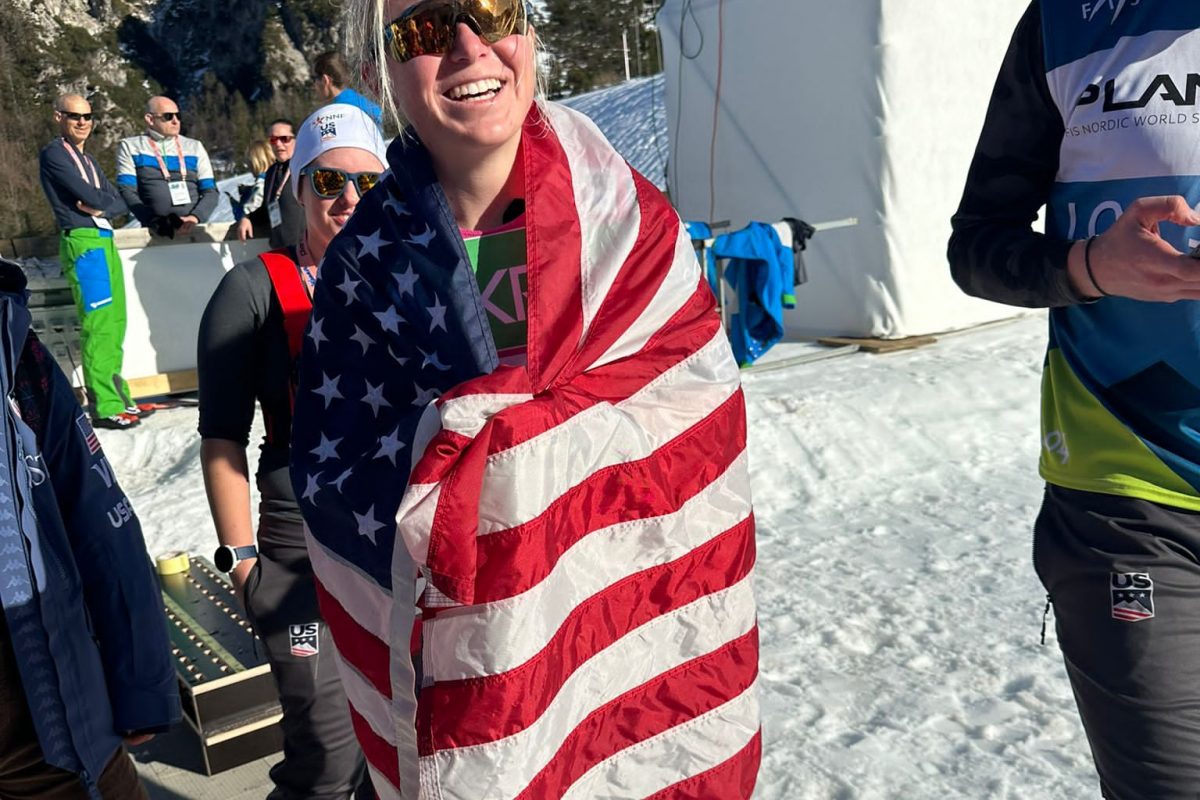
One comment
T.Eastman
July 3, 2013 at 9:25 pm
Nancy, thanks for this great series of articles.
Todd Eastman